Timing Is Key in Adding New National Collection Species
Through the various efforts of our Participating Institutions, over 150 rare plants were added to the National Collection this year. Each of these species is now conserved within an ex situ collection, often the first step to more conservation work and increasing our knowledge of a species.
The seed conservation team at Denver Botanic Gardens covered a lot of ground. For a recent collection, they drove 200-300 miles to get to the sites. Fortunately, this particular species, and many others, take them through some amazing scenery! They drove three scenic byways through the central mountains and down to montane forests of the Western Slope. This route comes with mountain views, but also, team lead Alex Seglias admits, “a bit of white knuckling while driving over Independence Pass near Aspen”. Overall, the journey was definitely worth its quarry – the Grand Mesa beardtongue (Penstemon mensarum), a beautiful perennial with intense blue flowers touched with hints of purple to pink.
The striking pensetemon is a globally rare plant found only in Colorado tracked by the Colorado Natural Heritage Program (CNHP). The seed had never been collected by the Denver Botanic Gardens, so the intrepid seed conservation team from the Gardens felt that it was important to take advantage of the Millennium Seed Bank funding coming through CPC to conserve this species in their seed bank.
The first part of their hunt for beardtongue seed occurred in early July. Using the records kept by CNHP, the team went out to the previously known populations to check on their current status. The most recent records were from 2010, and some were older, so the first step was to make sure the populations were still even there! It was also at this time that the team assessed their potential for seed collection, and of the seven populations they visited, two were deemed suitable for seed collection. A few of the populations remain a mystery, as Forest Service road conditions prevented the team from visiting.
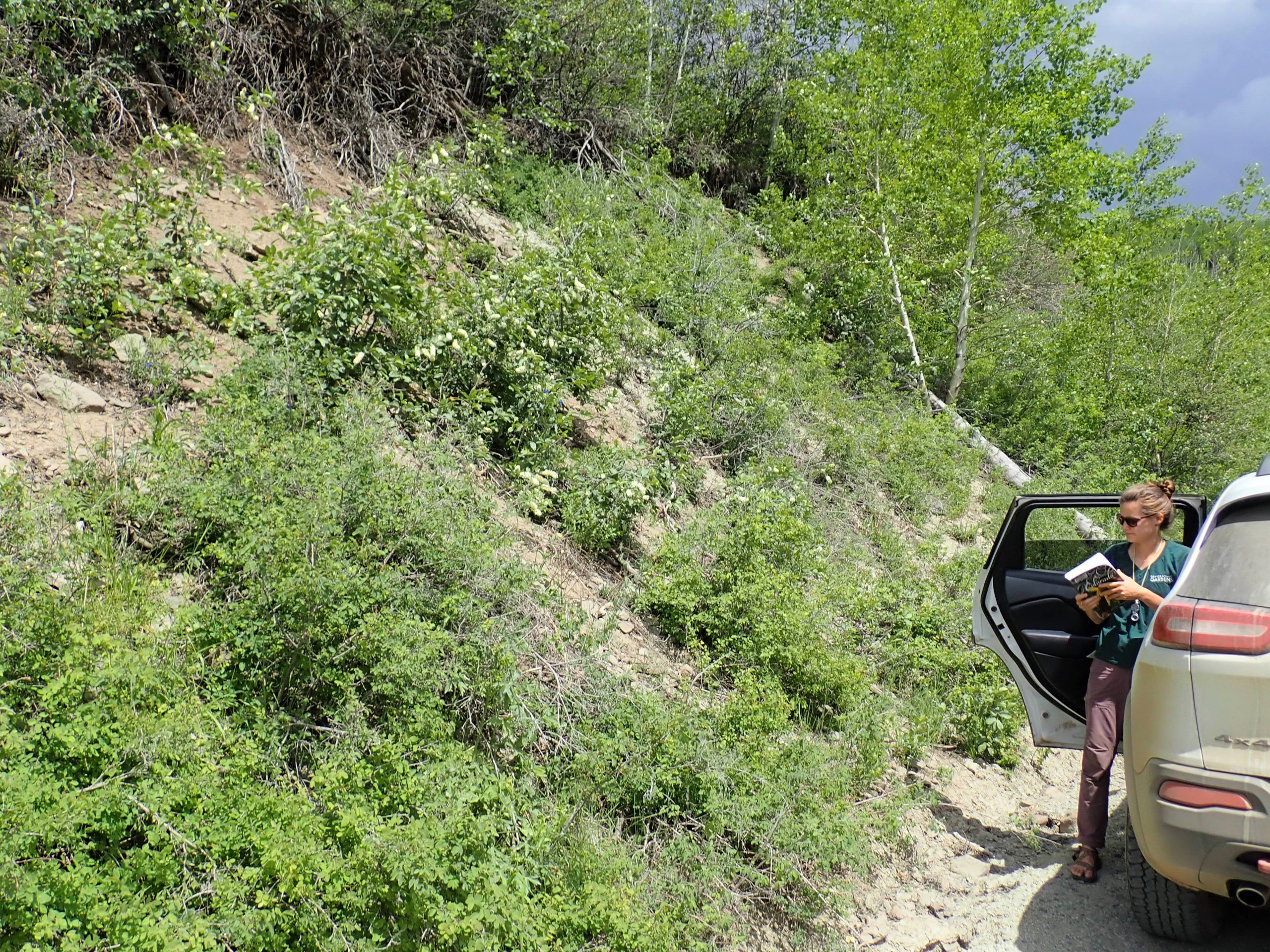
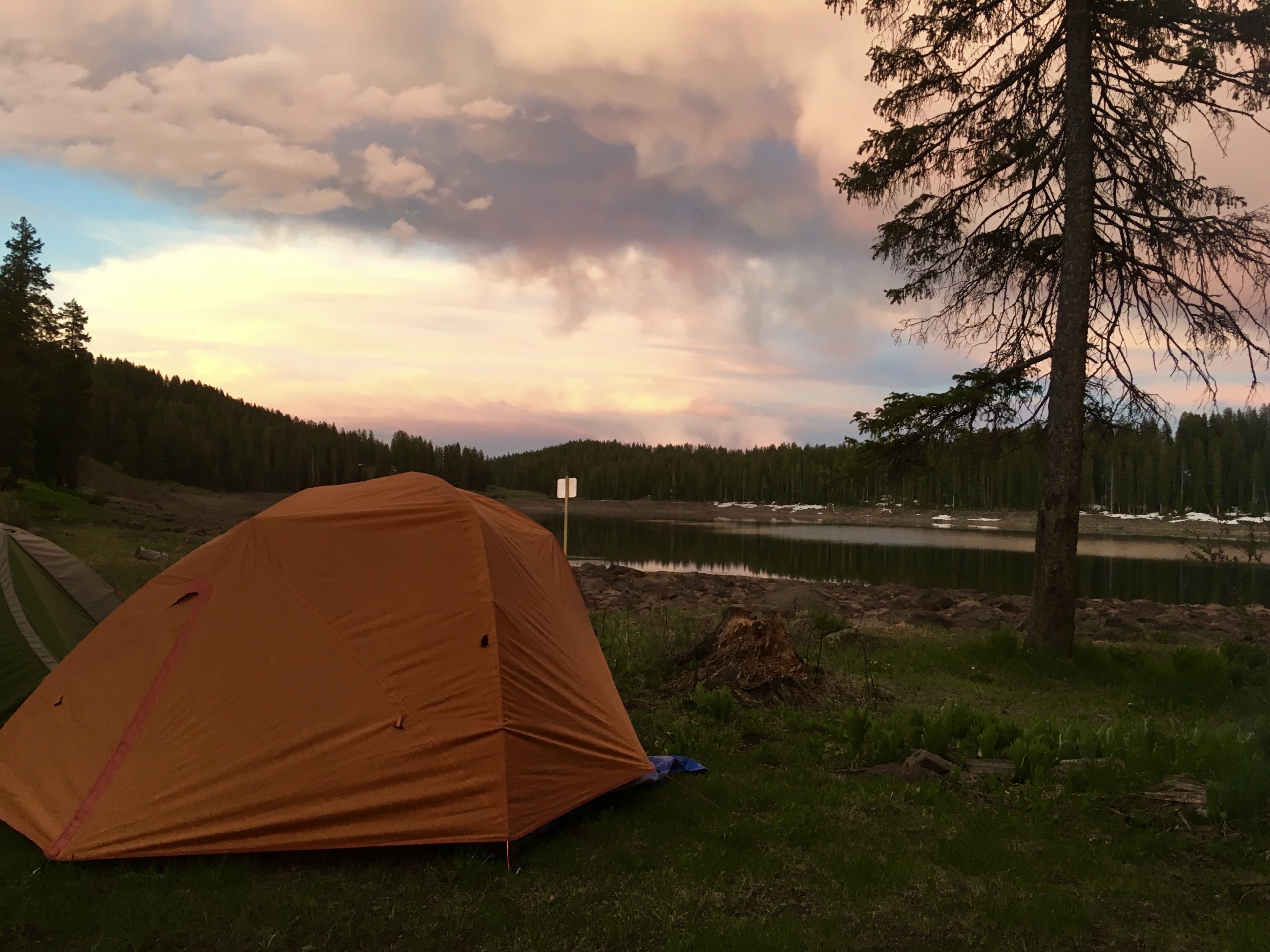
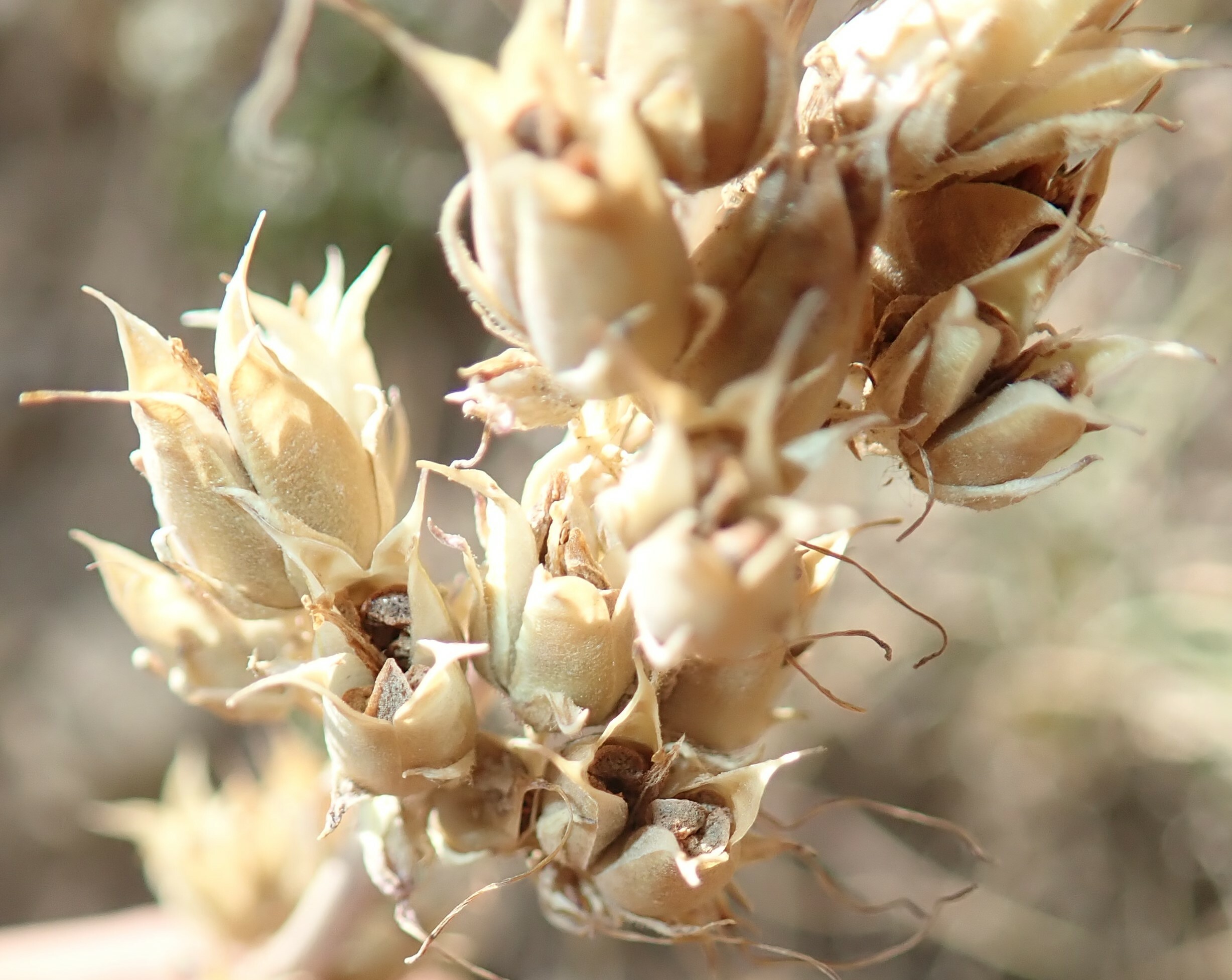
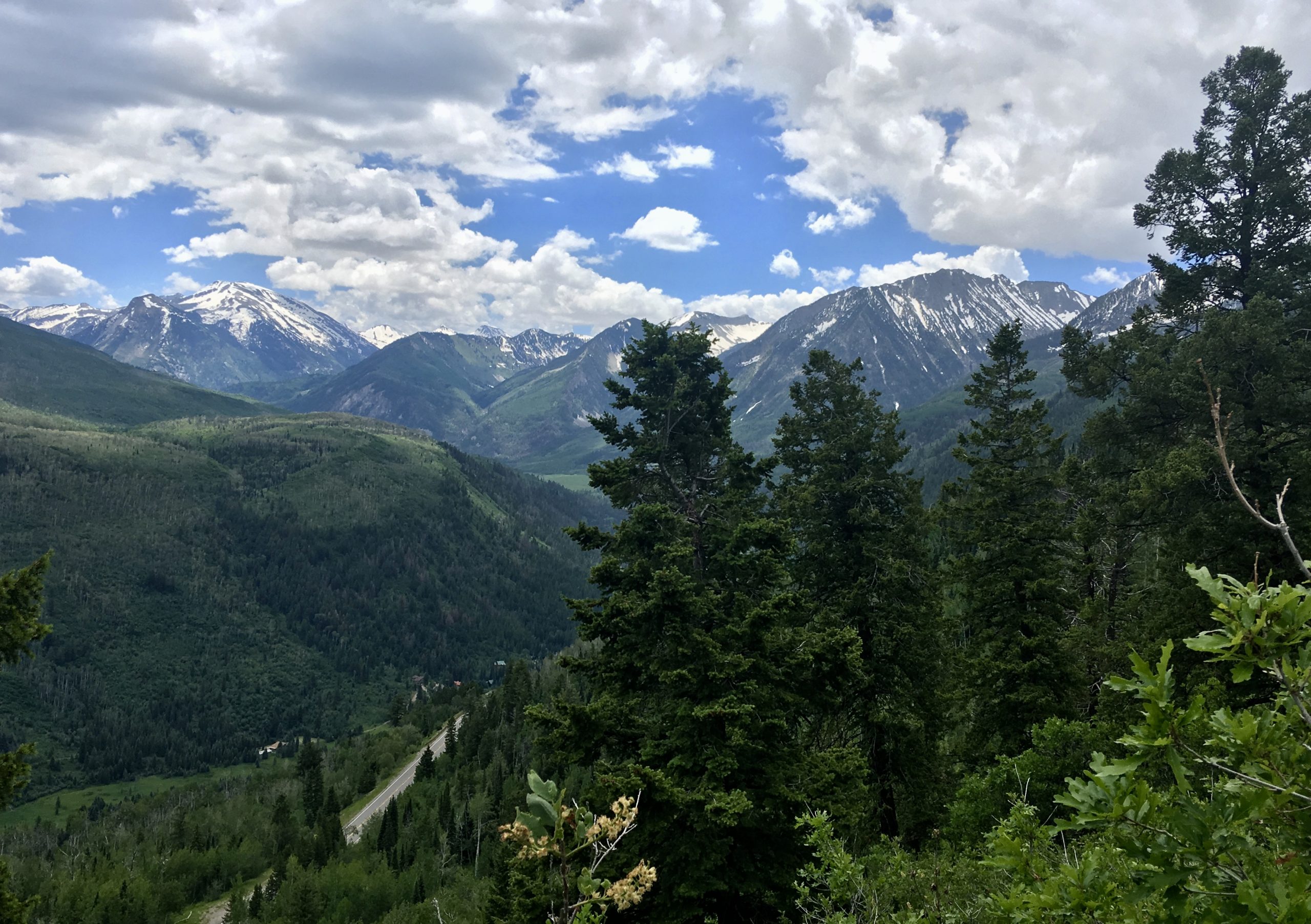

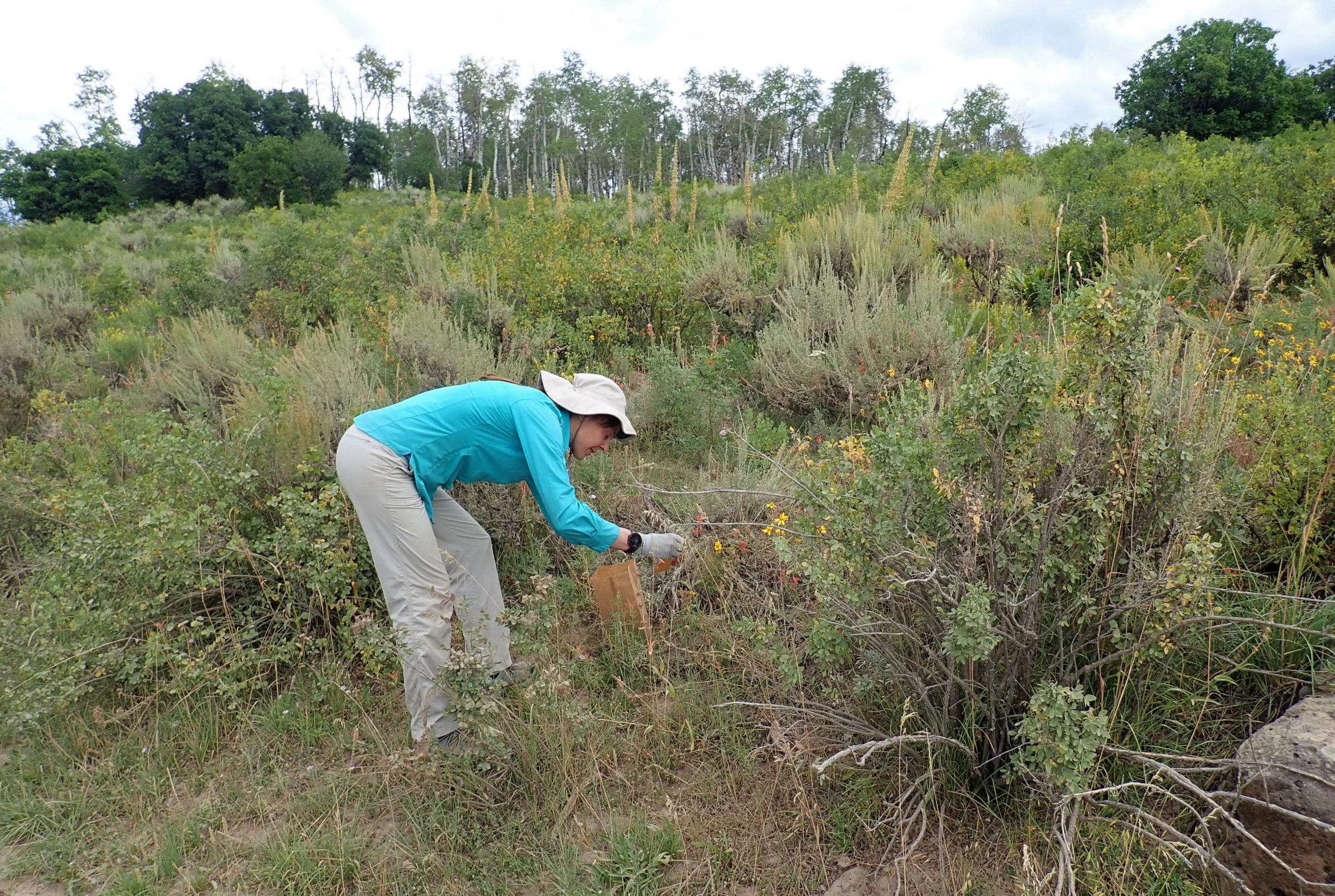
Returning to the two sites in mid-August, the drive over Independence Pass wasn’t the only cause for worry. “I think every seed collector is always a little worried that they are going to miss the opportunity to collect seed,“ stated Alex, an experienced seed conservation researcher herself. And, not having previously monitored or collected seed from the species, there was more cause for concern as Alex and the seed team weren’t entirely sure of the fruiting timing. Concerned that that their August trip was actually too late, the team was surprised that they were actually a couple of weeks early.
Despite arriving early, the team still got some seed, but then a decision needed to be made. The collections were small, only getting seed from around 20 plants from each population. Would that be sufficient, or should the team return to try to get more seed from more individual plants? Would that time, that long drive, prevent them from being able to collect from other species in need in other areas of the state? Knowing the CPC guidelines and the need for a representative diversity in a conservation collection, Alex decided getting seed from at least 50 individuals total was worth a second trip.
Two weeks later, the team was out again. Alex figured that two weeks was probably enough time for the fruits to mature, but not disperse entirely. Of course, just in the back of her mind sat the idea that there was still the chance that they would be driving hundreds of miles to a population, only to find the seed had already dispersed. But, her instincts were correct, and they came up to the sites to find brown, dry, open fruits, with hundreds of seeds still inside – a seed collector’s dream.
Alex noted that it was a great feeling to know that they had made the right decision to come back and that timed the return pretty perfectly. “Seed collection of rare species can be challenging and frustrating. If you mistime seed collection of a species with only a few populations, and small populations at that, it is very disappointing, because you want to do everything you can to conserve the species. So, making a good seed collection of a rare species is always a great feeling.” A great feeling, and another great addition to the CPC National Collection as all Participating Institutions work to conserve the 4,400 rare plants in North America.